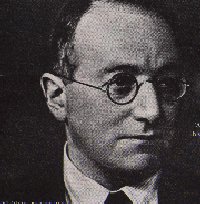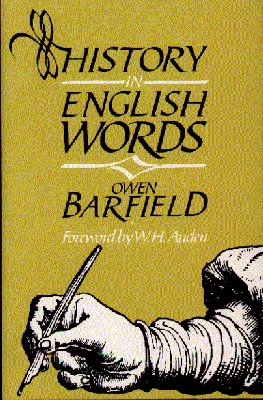
R. G. Collingwood

| Historical Imagination |
With his contemporary, the philosopher R. G. Collingwood, Barfield would agree that history is a process in which man creates for himself this or that kind of human nature by recreating in his own thought the past to which he is heir" (quoted in RM 258).
Barfield has stressed his desire "not to think about the past, as it were, but to look at it," and this can be done best through the medium of language, for words may well be "the best telescopes" for seeing the past (HEW 21). Such a "looking back" is what Barfield means by historical imagination: "the habit of mind which endeavors to approach a past epoch by seeing the world through its eyes instead of seeing it through the eyes of the twentieth century" (RM 238).1 "In assessing the contribution of [a past] epoch to the history of human consciousness," Barfield counsels, we must always 'refrain from judging it by later standards--especially if the creation of those standards is part of the very contribution to be assessed" (RM 238).
Barfield is under no illusion about the difficulty
of acquiring such a habit of mind. As he admits in Saving the Appearances,"To
depict the kind of consciousness which
prevailed at still earlier periods requires, it seems to me, a different
method and a different terminology. It may well also demand the extension
of historical imagination into a manner of clairvoyance" (105). But he
has remained confident since the publication of his first book about the
success of our mission: "For while the nineteenth century spends itself
prodigally in multitudinous endeavors to know what the past was, it is
now possible for us, by penetrating language with the knowledge thus accumulated,
to feel how the past is" (HEW 21).
| See in particular History in English Words, passim. |
1In "The Rediscovery
of Allegory (II)," Barfield provides a fine example of the failure to use
historical imagination by quoting art historian E. H. Gombrich on our understanding
of the art of earlier eras:
|